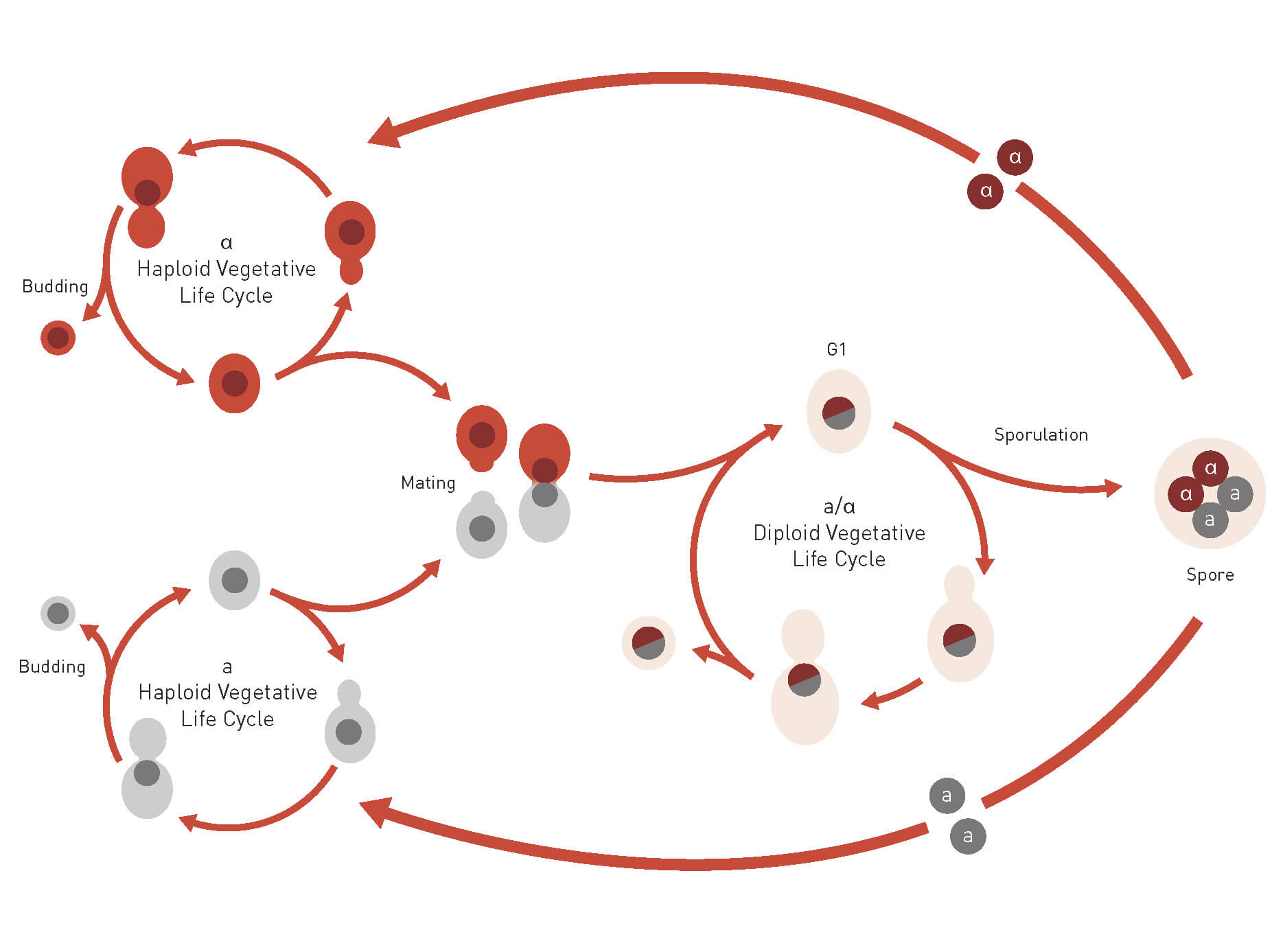What is Yeast?
Yeast is
Yeasts are unicellular eukaryotes that belong to the Kingdom of Fungi1. The size of yeast cells typically varies from 4-6 μm in diameter. With over 1,500 species identified so far, yeasts are found in water, soil, and plant leaves. They are also found on animal skin or inside an animal symbiotically. However, some yeast-like fungal parasites, such as Candida albicans, could cause oral and genital infections in humans2.
Yeast is one of the earliest domesticated organisms. Saccharomyces cerevisiae is the most commercially significant species that has been used by humans to produce bread, wine and beer for hundreds if not thousands of years3.
Yeast growth
Many yeasts are non-pathogenic and are very easy to work with4. Yeasts can be grown in chemical-defined media both in liquid culture and on solid agar. Both Saccharomyces cerevisiae and Schizosaccharomyces pombe can grow optimally at 30°C with an average doubling time of 90 – 120 minutes. However, they also can grow at temperatures as low as 16°C and as high as 42°C. In between usage, yeast can be stored in 10% glycerol at -80°C freezer for years.
The yeast life cycle
Yeasts have two opposite mating types (a and α for S. cerevisiae; h+ and h- for S. pombe), and can exist in both haploid and diploid states. Depending on the environment, yeast undergo sexual or asexual reproductive life cycles to maintain or switch their ploidy
(Figure 1) (5).
When nutrients are abundant, yeasts propagate using asexual reproduction. For S. cerevisiae, this is done via budding, where the daughter cell originates as a small bud on the mother cell and continues to grow until the daughter separates from the mother. This is why S. cerevisiae is commonly known as budding yeast.
For S. pombe, however, asexual reproduction is done via fission, from which two daughter cells of equal size are produced. This is why S. pombe is commonly known as fission yeast.
When nutrients are limited or during other high-stress conditions, yeasts undergo mating to generate diploid cells (in the case of S. pombe) or undergo meiosis to generate haploid spores, which are contained in an ascus (in the case of S. cerevisiae).

Figure 1: Yeast life cycle. See text for details.
Yeast fermentation
Yeasts can survive in the presence and absence of oxygen1. In the presence of oxygen, yeast undergo aerobic respiration and convert carbohydrates (sugar source) into carbon dioxide and water. In the absence of oxygen, yeasts undergo fermentation and convert carbohydrates into carbon dioxide and alcohol (Figure 2).
Application: baking and alcohol
Because of their ability to undergo fermentation, yeasts have been used in the baking and alcohol industries for hundreds, if not thousands of years3. In baking, yeasts convert the fermentable sugar in the dough into carbon dioxide, which causes the dough to expand and gives rise to the soft and spongy texture of the bread. In the alcohol industry, yeasts convert sugar in grapes (in the case of wine-making) or other sugar sources into ethanol (Figure 2).
The most common yeast species used in the baking and alcohol industries is S. cerevisiae. This is why S. cerevisiae is also referred to as Baker’s yeast or Brewer’s yeast.
Application: biomedical and biofuels research
Because many basic cellular mechanisms are conserved between yeasts and humans, yeast has been an important model organism for studying genes, proteins, and pathways that govern human health6. It is also widely researched in the biofuel industries for its ability to convert sugar into alcohol. The most commonly used yeast species in research are S. cerevisiae and S. pombe.
The Saccharomyces cerevisiae genome
Saccharomyces cerevisiae is the first eukaryote to have its genome completely sequenced. Completed in 1996, the sequencing project was a truly global collaboration, taking 7 years and involving more than 100 laboratories from Europe, USA, Canada and Japan. The entire sequence of S. cerevisiae 16 chromosomes, consisting of 12 million base pairs with more than 6,000 open reading frames, is now maintained publicly and is available at the Saccharomyces Genome Database (www.yeastgenome.org)7.
Powerful genetics and molecular techniques in Saccharomyces cerevisiae
Since the genome became available, many powerful techniques have been developed in S. cerevisiae to study eukaryotic cell biology. Examples of these techniques include tetrad analysis, Synthetic Genetic Array (SGA) analysis, and Yeast two-hybrid (Y2H) analysis.
Get started with yeast genetics
Explore the essential techniques and markers used in research.